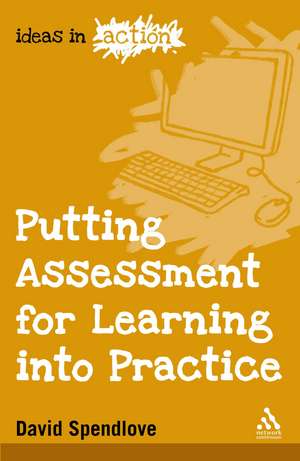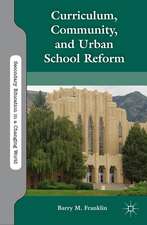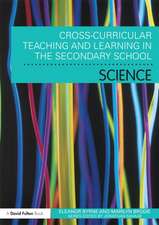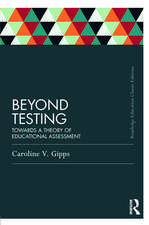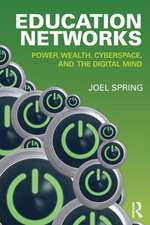Putting Assessment for Learning into Practice: Ideas in Action
Autor David Spendloveen Limba Engleză Paperback – 14 mai 2009
Putting Assessment for Learning into Practice is about the purpose of teaching and assessment as a means to ensuring deep, maximised, engaged and challenging learning. The simple message is good teaching can overcome bad testing and central to assessment for learning is empowering learners through developing learning autonomy. This means involving learners in their own learning through reflection but also as co-constructors and co-negotiators of their learning.
This book is for all teachers and school leaders who are committed to ensuring learners are engaged in successful, meaningful and deep learning. Effective strategies based upon good practice are identified which place teachers and learners as central to the process of owning and adapting their teaching and learning.
This book is for all teachers and school leaders who are committed to ensuring learners are engaged in successful, meaningful and deep learning. Effective strategies based upon good practice are identified which place teachers and learners as central to the process of owning and adapting their teaching and learning.
Preț: 91.30 lei
Preț vechi: 152.34 lei
-40% Nou
Puncte Express: 137
Preț estimativ în valută:
17.47€ • 18.68$ • 14.57£
17.47€ • 18.68$ • 14.57£
Carte tipărită la comandă
Livrare economică 17 aprilie-01 mai
Preluare comenzi: 021 569.72.76
Specificații
ISBN-13: 9781847064103
ISBN-10: 1847064108
Pagini: 128
Ilustrații: Illustrations
Dimensiuni: 138 x 216 x 13 mm
Greutate: 0.16 kg
Editura: Bloomsbury Publishing
Colecția Continuum
Seria Ideas in Action
Locul publicării:London, United Kingdom
ISBN-10: 1847064108
Pagini: 128
Ilustrații: Illustrations
Dimensiuni: 138 x 216 x 13 mm
Greutate: 0.16 kg
Editura: Bloomsbury Publishing
Colecția Continuum
Seria Ideas in Action
Locul publicării:London, United Kingdom
Caracteristici
The DCSF is making substantial financial support available for AfL and has announced a total of £150 million over the 2008-11 in order that schools can use formative assessment to drive pupil progress.
Cuprins
Acknowledgements
Introduction
Chapter 1 - Feedback and learning
There are only two questions needed.
Summative, Formative and Assessment for Learning Feedback that helps learning - the point of contact
Linking feedback to objectives
Creating the right emotional environment for feedback Gaining feedback from learners - communication
Shaping the learning journey
Differentiation - central to AfL
Sharing criteria
Comment only marking
Planning intervention
Where does all the time for this come from?
Chapter 2 - Questioning and Dialogue
Pre planning questions (with colleagues)
Question routines
Blooming questions
Using wait time
Involving everyone in dialogue
Targeting questions
Think Pair Share
Look no hands
Key questions to frame the learning
Socratic questioning
Putting it all together
Chapter 3 - Further elements of AfL and learning.
The learner and assessment - Peer assessment
Engaging learners with criteria
From Quality Control to Quality Assurance
Lesson design - building in not adding on
Writing objectives
Sharing Objectives using WILT and WALT OLl
Model and Share
AfL and Personalised learning
Learner (pupil) Voice
Just in time or just in case
Self Esteem and Self efficacy
Motivation
Plenaries
Portfolios
Chapter 4 - the big picture
Teacher constructs
Formative use of summative assessment
Findings from research into AfL
Developing whole school approach to AfL
Autonomy not automation - comment only feedback. Communicating learning expectations -what and should you share?
Peer review /Coaching
Changing attitudes and expectations - reframing.
Working collaboratively
Assessment reform group
10 Principles for AfL Self evaluation - where are we? Further reading
Introduction
Chapter 1 - Feedback and learning
There are only two questions needed.
Summative, Formative and Assessment for Learning Feedback that helps learning - the point of contact
Linking feedback to objectives
Creating the right emotional environment for feedback Gaining feedback from learners - communication
Shaping the learning journey
Differentiation - central to AfL
Sharing criteria
Comment only marking
Planning intervention
Where does all the time for this come from?
Chapter 2 - Questioning and Dialogue
Pre planning questions (with colleagues)
Question routines
Blooming questions
Using wait time
Involving everyone in dialogue
Targeting questions
Think Pair Share
Look no hands
Key questions to frame the learning
Socratic questioning
Putting it all together
Chapter 3 - Further elements of AfL and learning.
The learner and assessment - Peer assessment
Engaging learners with criteria
From Quality Control to Quality Assurance
Lesson design - building in not adding on
Writing objectives
Sharing Objectives using WILT and WALT OLl
Model and Share
AfL and Personalised learning
Learner (pupil) Voice
Just in time or just in case
Self Esteem and Self efficacy
Motivation
Plenaries
Portfolios
Chapter 4 - the big picture
Teacher constructs
Formative use of summative assessment
Findings from research into AfL
Developing whole school approach to AfL
Autonomy not automation - comment only feedback. Communicating learning expectations -what and should you share?
Peer review /Coaching
Changing attitudes and expectations - reframing.
Working collaboratively
Assessment reform group
10 Principles for AfL Self evaluation - where are we? Further reading
Notă biografică
David Spendlove
